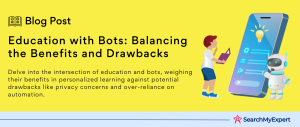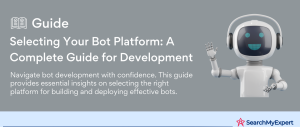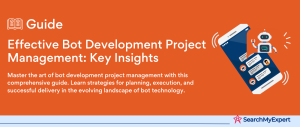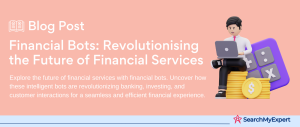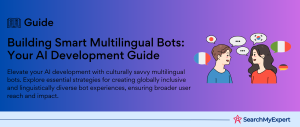Understanding Bots: Definition and Applications
Bots, short for robots, are software applications designed to automate tasks, often repetitive and mundane, that would otherwise require human intervention. These tasks range from simple, like setting reminders, to complex, such as managing large-scale data. Bots are prevalent in various sectors, including customer service, where they power chatbots for instant customer query resolution; social media, where they automate posts and responses; and e-commerce, streamlining shopping experiences.
AI and Machine Learning: Catalysts in Technological Evolution
Artificial Intelligence (AI) and Machine Learning (ML) are two interlinked facets of modern technology with profound implications. AI refers to the simulation of human intelligence in machines programmed to think and learn like humans. It encompasses everything from basic algorithms performing specific tasks to complex systems mimicking human cognition. Machine Learning, a subset of AI, involves training algorithms to learn and make decisions from data, adapting without explicit programming. These technologies are crucial in fields like healthcare, predictive diagnostics, finance, risk assessment, and fraud detection, and in transportation, for self-driving vehicles.
The Synergy Between AI/ML and Bots: Paving the Way for Advanced Innovations
The integration of AI and ML with bots represents a significant leap forward in technology. This synergy enables bots to not just perform tasks but to learn and improve over time. AI-powered bots can understand and interpret human language, making them more efficient in customer service roles. In data analysis, they can identify patterns and insights from large datasets rapidly. The potential of AI/ML-enhanced bots is enormous, from transforming business operations through automation and enhanced decision-making to revolutionizing industries with intelligent, learning systems that evolve continuously.
Rule-Based Bots vs AI-Powered Bots: A Comparative Study
Rule-based bots operate on predefined rules and scripts. These bots follow a set of established guidelines to respond to specific queries. They are relatively simple, easy to implement, and suitable for tasks with predictable patterns and responses. However, their inability to learn or adapt makes them less effective in handling complex, unscripted interactions.
In contrast, AI-powered bots leverage Artificial Intelligence to learn from interactions and improve over time. They are not limited to predefined scripts and can handle a wide range of queries with greater flexibility. These bots can understand context, make decisions, and provide personalized responses, making them ideal for dynamic and complex tasks.
Natural Language Processing: Enhancing Bot Communication Skills
Natural Language Processing (NLP) is a critical component in the realm of AI-powered bots. It enables bots to understand, interpret, and respond to human language in a way that is both meaningful and contextually relevant. NLP breaks down and analyzes user input, allowing bots to comprehend queries, extract relevant information, and generate appropriate responses. This capability is essential in customer service applications, enabling bots to provide more human-like, efficient, and accurate assistance.
Machine Learning Techniques in Bots: Diverse Approaches for Enhanced Intelligence
- Supervised Learning: This technique involves training bots using labeled datasets. Here, the bot learns to predict outcomes based on past data, making it suitable for tasks like spam detection or product recommendations.
- Reinforcement Learning:
This approach allows bots to learn through trial and error, receiving feedback in the form of rewards or penalties. It’s particularly useful in dynamic environments, such as in gaming bots or for optimizing resource allocation. - Unsupervised Learning: In unsupervised learning, bots analyze and identify patterns in unlabeled data. This method is beneficial for clustering and segmentation tasks, such as customer segmentation in marketing or anomaly detection in security systems.
Conversational Intelligence: Crafting Realistic Dialogues
AI/ML significantly enhances bots’ conversational intelligence, enabling them to conduct natural and engaging dialogues. Through advanced NLP and Machine Learning algorithms, bots can understand the intent and context of user queries, manage nuanced conversations, and provide coherent and contextually relevant responses. This capability is especially vital in customer service and virtual assistant applications, where maintaining a human-like interaction is crucial for user satisfaction.
Personalization: Customizing User Interactions
One of the standout capabilities of AI/ML-powered bots is personalization. By analyzing user data and past interactions, these bots can tailor responses and recommendations to align with individual user preferences and needs. This personalization extends to various domains, from e-commerce, where bots suggest products based on browsing history, to content platforms, where they recommend articles or videos based on user interests.
Automation and Decision-Making: Streamlining Operations
AI/ML bots excel in automating repetitive tasks and making data-driven decisions. In business processes, they can handle tasks like scheduling, data entry, and customer inquiries, freeing human resources for more complex duties. Moreover, these bots can analyze vast amounts of data to make informed decisions, such as identifying market trends or optimizing operational workflows, thus enhancing efficiency and effectiveness.
Proactive Engagement: Anticipating User Needs
Proactive engagement is another frontier where AI/ML bots are making significant strides. Unlike traditional reactive bots, these advanced bots can initiate interactions based on user behavior patterns and predictive analysis. For instance, a bot might alert a user about a potential issue with their service subscription or suggest reordering a product based on purchase history. This proactive approach not only improves user experience but also fosters a more dynamic interaction between users and bots.
Customer Service: Revolutionizing Support and Interaction
In the realm of customer service, AI/ML-powered bots are transforming how businesses interact with their clients. These bots offer 24/7 support, efficiently resolving issues and handling inquiries. By analyzing customer data, they provide personalized recommendations and assistance, significantly improving the overall customer experience. Their ability to handle a high volume of queries simultaneously reduces wait times and increases efficiency, making them invaluable assets in customer relations.
Healthcare: Empowering Patient Care and Medical Analysis
AI/ML bots in healthcare are instrumental in enhancing patient care and operational efficiency. They assist in scheduling appointments, managing patient queries, and even providing preliminary medical advice. These bots can analyze medical data, aiding in diagnostics and treatment planning. Their ability to process and interpret vast amounts of medical information quickly makes them essential tools in modern healthcare.
Education: Tailoring Learning Experiences
In education, AI/ML bots are used to deliver personalized learning experiences. They adapt to individual learning styles and paces, providing customized content and feedback. These bots can assist in language learning, and problem-solving, and even administer and grade tests. Their interactive nature makes learning more engaging and effective, offering students a more tailored educational journey.
Financial Services: Enhancing Security and Advisory Services
In the financial sector, AI/ML bots play a critical role in managing accounts, providing financial advice, and enhancing security. They assist customers with transaction inquiries, portfolio management, and investment advice. Advanced bots are equipped to detect and prevent fraud by analyzing transaction patterns and identifying anomalies, thus safeguarding customer assets.
Entertainment and Gaming: Personalizing User Experiences
In the entertainment and gaming industry, AI/ML bots contribute to creating more immersive and personalized experiences. They are used in games to improve AI behavior, making non-player characters more realistic and responsive. In entertainment platforms, these bots recommend content based on user preferences and viewing history. They also serve as interactive virtual assistants, enhancing user engagement with personalized interactions.
Ethical Concerns in AI/ML Bots: Bias, Transparency, and Privacy
The implementation of AI/ML in bots raises several ethical concerns. Bias is a significant issue, as bots can inherit and amplify biases present in their training data, leading to unfair or discriminatory outcomes. Transparency is another concern; understanding how bots make decisions is crucial, especially in high-stakes applications like healthcare or law enforcement. Privacy is a paramount concern, as bots often handle sensitive personal data, necessitating stringent measures to protect user information and ensure compliance with privacy laws.
Data Security and AI Explainability: Balancing Innovation and Clarity
Data security is a critical challenge in deploying AI/ML bots, as they frequently process sensitive and personal data. Ensuring robust security measures to protect against breaches and unauthorized access is essential. The explainability of AI decisions is another challenge. Many AI/ML models, especially deep learning systems, are often seen as ‘black boxes’, with decision-making processes that are opaque and difficult to interpret. Developing methods to make AI decisions more transparent and understandable is crucial, especially in sectors where accountability is critical.
Job Displacement Concerns and Responsible AI Development
The automation capabilities of AI/ML bots bring concerns about potential job displacement. While they can increase efficiency and reduce the need for human labor in certain tasks, it’s important to consider the impact on employment and the need for workforce retraining and upskilling. Emphasizing responsible development and deployment of AI-powered bots is crucial. This involves adhering to ethical guidelines, ensuring fairness and transparency, and considering the broader societal implications of AI technology. Responsible development also means engaging stakeholders, including policymakers, educators, and the public, in discussions about the role of AI/ML in society and the workforce.
Advancing AI/ML: Elevating Bot Capabilities to New Heights
The future of AI/ML promises substantial advancements in bot capabilities. As AI and ML technologies continue to evolve, bots are expected to become more sophisticated, efficient, and versatile. Future developments could lead to bots that not only automate tasks but also predict needs and provide solutions proactively. The integration of more advanced algorithms and computing power will enable bots to process and analyze data faster and more accurately, leading to more intelligent and capable bots in various sectors.
Emerging Trends: Multi-modal AI, Emotional Intelligence, and Context-Aware Bots
- Multi-modal AI:
This involves bots understanding and interpreting multiple types of data inputs, such as text, voice, images, and sensory data. Such capabilities will enable bots to provide more comprehensive and nuanced responses, enhancing user interaction. - Emotional Intelligence:
The incorporation of emotional intelligence in bots is an emerging trend. These bots will be able to detect and respond to human emotions, making interactions more personalized and empathetic. This advancement is particularly promising in customer service and healthcare, where understanding emotional cues is crucial. - Context-Aware Bots: Future bots will be more adept at understanding and responding to the context of interactions. This involves not just processing the immediate data but also considering historical data, environmental factors, and current trends. Such context-aware bots can provide more relevant and timely responses, enhancing decision-making and user experience.
The Future of Bots in Society: Integration and Implications
Looking ahead, bots are poised to become an integral part of daily life, seamlessly integrating into various aspects of society. From smart homes and personal assistants to advanced industrial and healthcare applications, bots will play a pivotal role in shaping future lifestyles and work environments.
This integration raises important considerations about societal implications, including privacy, security, and ethical use of AI. It also opens up discussions about the balance between technological convenience and human touch, and the need for frameworks to govern the development and use of these advanced technologies. The future of bots, underpinned by AI/ML advancements, holds tremendous potential for innovation, efficiency, and improvement in quality of life, albeit with a need for careful consideration of its broader impact on society.
Recapping the Transformative Power of AI/ML in Bots
The journey through the world of AI/ML-powered bots has revealed their transformative power across various sectors. From enhancing customer service with 24/7 support and personalized interactions to innovating in healthcare, education, and financial services, these bots have shown immense potential. The integration of AI and ML has enabled bots to not just perform tasks but to learn, adapt, and provide insights, making them invaluable in today’s fast-paced and data-driven world.
The Imperative of Responsible Development
The advancement of AI/ML in bots brings with it a responsibility to develop these technologies ethically and responsibly. Addressing challenges like data security, AI explainability, and potential job displacement is crucial. As bots become more integrated into our lives, ensuring their development aligns with ethical standards, respects privacy, and promotes transparency is essential. This responsible approach will foster trust and acceptance, crucial for leveraging the full potential of AI/ML-powered bots.
A Future Shaped by Human-Bot Collaboration
Looking ahead, the collaboration between humans and AI/ML-powered bots presents a future brimming with possibilities. This partnership, where bots augment human capabilities, promises not only increased efficiency and innovation but also the potential to tackle complex global challenges.
Provoking Thought on the Future of AI-Powered Bots
As we stand on the brink of this technological revolution, it’s important to ponder: How will AI/ML-powered bots continue to evolve, and what new capabilities will they unlock in the next decade? How will we, as a society, harness their potential while navigating the ethical and practical challenges they present? The future of AI-powered bots is not just about technological advancement; it’s about shaping a world where technology enhances human experience, drives progress, and opens new horizons.
Conclusion:
AI/ML-powered bots represent a significant leap forward in technology, offering transformative capabilities across numerous industries. From enhancing customer engagement to revolutionizing healthcare and education, these bots are redefining efficiency and personalization.
However, with great power comes great responsibility. The ethical development and deployment of these technologies are paramount to ensure they benefit society while minimizing potential risks. As we look towards the future, the harmonious collaboration between humans and bots stands as a key driver for innovation and advancement. This burgeoning field not only promises technological breakthroughs but also poses vital questions about our approach to integrating these intelligent systems into the fabric of daily life. How we answer these questions will shape the trajectory of our technological and societal evolution.
Elevate your customer experience with Bot Development Service Companies.
Table of Contents
Toggle

